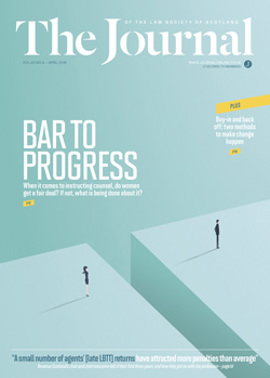An infrastructure levy for Scotland

The Planning (Scotland) Bill was published on 4 December 2017 and the Local Government & Communities Committee has been hearing evidence. One of the more controversial aspects is the provision for an infrastructure levy on new qualifying development, operating as a form of local taxation. Solicitors and all involved in property development should be aware of this possibility when negotiating and in relevant documentation.
The bill followed the Supreme Court judgment in Aberdeen City & Shire Strategic Development Planning Authority v Elsick Development Co [2017] UKSC 66 (25 October 2017), which upheld the Inner House decision to quash supplementary guidance requiring developers to pay into a pooled fund for strategic transport projects. The legislation did not allow planning authorities to operate an infrastructure levy; Lord Hodge commented that if it wanted to, the Scottish Parliament would have to legislate for this.
The levy in outline
The policy memorandum for the bill confirms that the intention is to help raise funds for infrastructure provision from new development. The levy is designed to capture a proportion of land value uplift, bringing public benefit from the value created by planning decisions and public sector investment. It is to be transparent, so it is clear who is liable to pay, with the charge liability known up front, providing certainty for developers and local authorities. This should replace the usual striking of heads of terms between these parties, and reduce (but not eliminate) the need for s 75 agreements, often criticised for creating delays.
Other potential benefits are said to be spreading the cost of infrastructure more widely, with all qualifying new development making a contribution. While these are laudable objectives, a levy is not without its critics who have looked to the limited success of a similar system south of the border, both in terms of providing adequate funding for new infrastructure and the sheer complexity in the rollout at local authority level.
Part 5 of the bill allows ministers to introduce an infrastructure levy by regulations. The levy would be payable to the local authority, in respect of development wholly or partly in its area, and used to fund identified infrastructure projects. It is clearly similar to the community infrastructure levy (CIL) introduced in England & Wales under the 2008 Planning Act.
“Infrastructure” is widely defined as:
- communications, transport, drainage, sewerage, and flood-related defence systems;
- systems for the supply of water and energy;
- educational and medical facilities; and
- facilities and other places for recreation.
However, the bill allows for this definition to be changed by regulations. It is unclear whether the power is intended to extend to the operating costs of infrastructure.
How would it work?
The bill contains only an enabling power; regulations would define how the levy would work in practice. It is likely that local authorities would draw up a charging schedule setting out what projects are to be funded, and that the developer or landowner will be charged per square metre of qualifying development. The rate of the levy and the projects it is to support will be subject to consultation and debate, which should mean proper consultation and public inquiry. As in England & Wales, there may well be exceptions such as qualifying social housing. There may also be exemptions and discounts to the levy, including where developers can demonstrate that it would impact adversely on economic viability. Ministers will be able to issue guidance, and regulations will provide for collection and enforcement, including offences. They may also preclude planning permissions from being granted until full payment has been made, with powers to issue a stop notice. There is also provision for an appeal process against the levy.
In this issue
- Fair instructions?
- The peasants have no bread
- Bad weather – adverse consequences?
- Defending children’s human rights in Scots law
- Scottish income tax – where are we now?
- Appreciation: Professor Emeritus Alexander John ("Alastair") McDonald
- Reading for pleasure
- Opinion: Gordon Addison
- Book reviews
- Profile: Paul Mosson
- President's column
- RoS welcomes new Keeper
- People on the move
- Fair instructions? (1)
- Law: not just a profession, but also a business
- Buying in and backing off
- Tax and the common touch
- Needs of the user
- Where did the money go?
- Five FOI tips every lawyer should know
- AI – the legal and ethical minefield
- Too long, too long?
- Times still a-changin' in '18
- An infrastructure levy for Scotland
- Tax changes to termination payments
- GDPR and the cloud
- Tide runs for lenders
- Passing on a pension to the right person
- Know your FTAs
- Scots to co-host ICW in Toronto
- Office of the Public Guardian: EPOAR and more
- Public policy highlights
- Our survey said...
- Q & A corner
- A profit without honour
- Appreciation: Professor Emeritus Alexander John ("Alastair") McDonald WS
- Ask Ash
- ASPIC finds its feet
- Pushing for change






